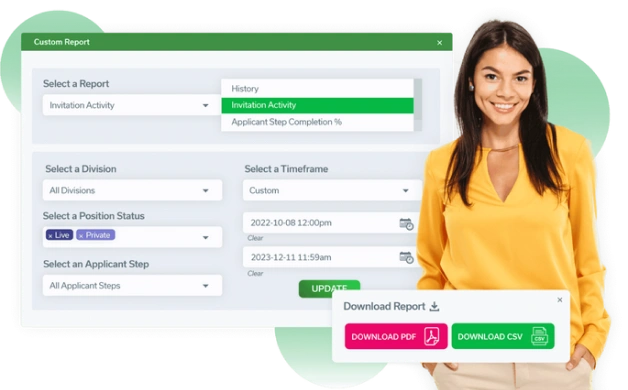Measuring Employee Development

Measuring Employee Development - ROI Improvement
At Evolve, we understand that the true value of any learning management system lies in its ability to drive measurable improvements in employee development. Our platform is designed with powerful tools and features that allow you to track and quantify the return on investment (ROI) for your training programs

Why Measure ROI in Employee Development?
Measuring the ROI of employee development is crucial for several reasons
- Justify Training Investments: Demonstrate the financial benefits of your training programs to secure ongoing investment.
- Optimize Resources: Allocate resources more effectively by understanding which programs deliver the best returns.
- Enhance Performance: Use data-driven insights to refine your training strategy and improve overall employee performance.
- Boost Employee Engagement: Show employees the tangible benefits of their development, increasing engagement and retention.
Key Features:
Performance Metrics
- Evaluate improvements in individual and team performance
- Use performance appraisals and KPIs to quantify the impact of training on job performance.


Employee Retention Rates
- Track retention rates to see if development programs contribute to lower turnover.
- High retention rates often correlate with increased job satisfaction and loyalty, reducing recruitment co
Customized Reports:
- Generate customized reports to showcase the impact of your training programs.
- Share these reports with stakeholders to demonstrate the value of your investment.


Skill Gap Analysis:
- dentify skill gaps within your organization and address them proactively
- Use our advanced reporting tools to pinpoint areas for improvement and tailor your training programs accordingly.
Automated ROI Calculation
- Streamlined Process: Explain how Evolve automates the calculation of ROI, simplifying what can often be a complex and time-consuming task
- Real-time Insights: Discuss how the software provides real-time data analytics, allowing businesses to track the impact of training programs as they unfold.
.webp)

Evolve - More Than Just ROI Calculation
- Evolve doesn't stop at calculating ROI. It provides a comprehensive suite of tools to empower your automation journey:
- Cost Analysis: Identify and track costs associated with automation, including software licenses, implementation, and maintenance.
- Benefit Tracking: Quantify the positive impact of automation on key business metrics.
- Scenario Modeling: Simulate different automation scenarios to assess potential ROI before implementation.
Frequently asked questions.
Whats happening around the World.
Employee development refers to activities and initiatives designed to enhance the skills, knowledge, and capabilities of employees over time, contributing to their professional growth and career advancement.
Measuring employee development allows organizations to track progress, assess the impact of development initiatives, and make informed decisions about future training investments.
Key metrics include:
- Skill Acquisition: Assessing new skills gained through training or development programs.
- Performance Improvement: Tracking changes in performance metrics or job-related outcomes.
- Feedback and Surveys: Gathering employee feedback on the effectiveness of development activities.
- Career Progression: Monitoring promotions, lateral moves, or increased responsibilities.
Performance evaluations provide a baseline for assessing growth, identifying strengths and areas for improvement, and aligning development goals with organizational objectives.
Clear learning objectives provide benchmarks for progress and achievement, guiding both employees and managers in evaluating developmental outcomes.
Managers can facilitate ongoing feedback, set development goals, provide coaching or mentorship, and track progress towards skill enhancement and career aspirations.
ROI assessment involves comparing the costs of development programs with the benefits, such as increased productivity, reduced turnover, improved employee satisfaction, and enhanced organizational performance.
Challenges include defining measurable outcomes, ensuring consistency in evaluation methods, accounting for external factors influencing development, and balancing qualitative and quantitative data.
Soliciting feedback from employees allows for insights into the relevance, impact, and satisfaction with development activities, guiding adjustments and future investments.
Technology tools such as learning management systems (LMS), performance management software, and analytics platforms enable tracking, reporting, and analysis of development metrics in real-time.
Strategies include promoting learning opportunities, recognizing and rewarding skill acquisition, fostering knowledge sharing, and encouraging career planning discussions.
By investing in employee development, organizations enhance workforce capabilities, foster innovation, increase employee engagement and retention, and achieve strategic goals more effectively.